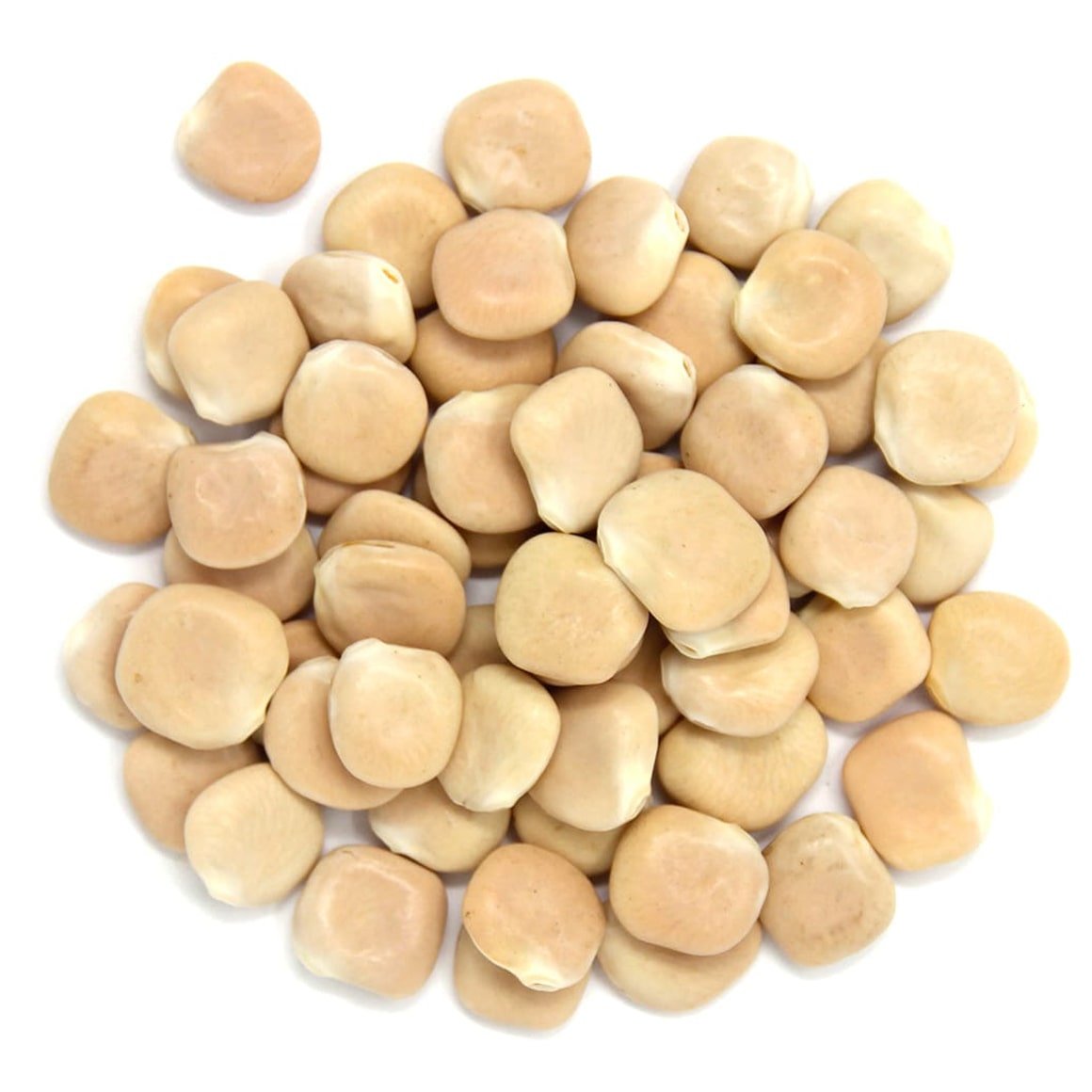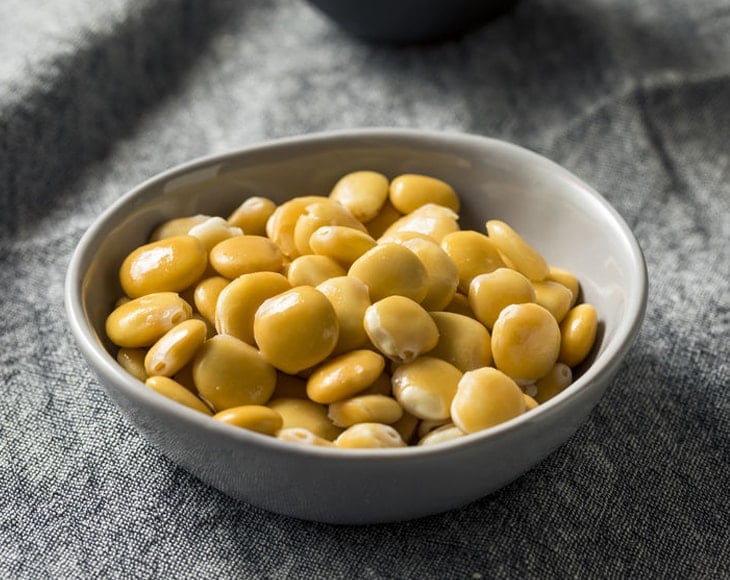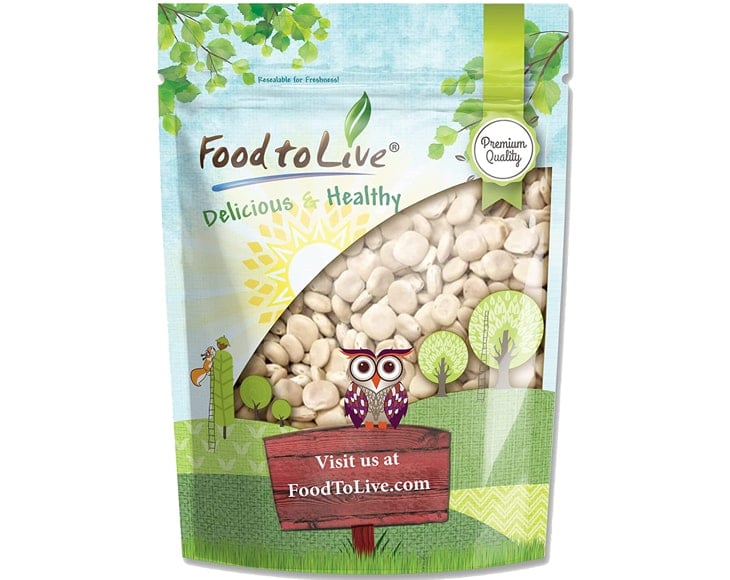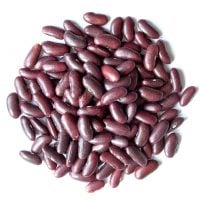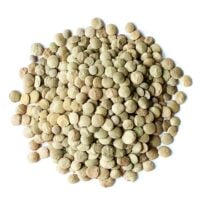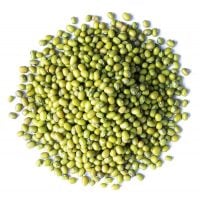- — Kosher, Raw, Vegan, Sproutable
- — High Germination Rate
- — Cholesterol, Sugars and Gluten-Free
- — High in Magnesium, Iron, Calcium and Vitamin B-6
What are Lupini Beans
Although lupini beans have become popular in the US only recently, they are known and used for a long time in other countries, especially in the Mediterranean region. These beans are the seeds of a flower of the same name. Initially, they are poisonous, but soaking or boiling makes them edible and unleashes the full potential of this superfood. For instance, dried lupini beans contain up to 50% of proteins, twice as much as green peas.
The taste of lupini beans resembles the taste of soybeans. Raw lupini beans are bitter due to alkaloids. However, this bitterness disappears after soaking. Therefore, when you buy raw lupini beans, it is necessary to soak or boil them. They can also be sold dried or pickled in a jar and ready for consumption.
Cooking and Storage of Lupini Beans
To make the taste of lupini beans as it is supposed to be, you can follow the next procedure:
- Rinse them thoroughly under running water. You need to get rid of any defective or discolored beans.
- Soak the lupini beans for 24 hours in cold water.
- Drain and rinse the lupini beans once again. The beans should turn pale yellow.
- Place the beans in a pot of cold water. Cover and cook for about 1-1 1/2 hours. If necessary, continue to add water so that the water completely covers the beans. Remove the foam when the beans are boiling. Salt to taste during cooking.
- When the beans are ready, drain the water and rinse the beans with cold water.
Store lupini beans refrigerated in a container. During storage, make sure to cover them with water fully. If you do not want to boil them, the process of soaking should take longer. In particular, you will need to soak them for five days. Do not forget to change the water.



